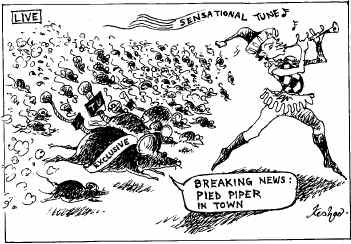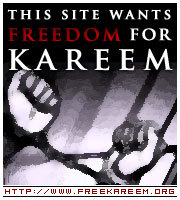Jun 14, 2006
Jun 12, 2006
Army's Kashmir Conundrum
Before independence, the Maharaja’s army, the Jammu & Kashmir (J&K) Rifles consisted of Dogras, Rajputs, Sikhs and some Muslims from what is today Azad Kashmir. The Maharaja excluded Kashmiri Muslim subjects from enlisting in the army. At independence, the army split along religious lines during the war with Pakistan in October 1947. The Hindus remained on the Indian side while Muslims chose Pakistan. Shortly after independence India abolished Princely States’ Forces, including Hyderabad’s predominantly Muslim army. However, the Hindu-dominated J&K Rifles, symbolised by its denominational war-cry “Durga Mata ki Jai” was retained and absorbed in the Indian army. The J&K Rifles is composed of men from Doda, Poonch and Rajouri villages, mostly Hindus. Regardless of the constitutional arrangements between Srinagar and Delhi, the region of Jammu and its largely Hindu inhabitants are fully integrated with India and identify as such. There has been no dearth of recruits from this area for J&K Rifles or other regiments. Unlike Valley Muslims, Muslims in Poonch do not share the same degree of alienation as do the Kashmiris, which explains why a woman like Wahida Prizm and her husband Maj. Fuad Khan earned a commission.
The Hindus of the Valley (the Pundits/Brahmins) rarely joined the army, not because they did not qualify or were distrusted by the state. They shunned the army — TN Raina, the chief of the army staff from 1975-78 being an exception — because they have better opportunities elsewhere. There are reports however, that the Army and the Air Force was especially recruiting Kashmiri Pundits, in the refugee camps in Jammu and Delhi.
Like the Jammu Hindus and Kashmir Pundits, the Buddhists of Ladakh identify completely with India. Many Ladakhi Buddhists are skilled mountain warriors, especially in high-altitude mountains’ snowy, whiteout conditions. The Buddhists, together with Tibetans, constitute the Ladakh Scouts (LS), upgraded as a regiment in 2000. Ladakh Muslims, a majority in the Kargil district were represented far fewer in numbers in LS, about 4 percent. But as part of Operation Sadbhavna, launched in late 2000 by Lt. Gen. Arjun Ray, the army undertook border-area development to win the confidence of the population, including villages like Turtuk, part of Azad Kashmir until 1971 war, when India wrested it from Pakistan.
Some officers — Maj. Gen. V.S. Budhwar, in particular — suspected the Turtuk villagers, Balti-speaking Muslims of loyalty to Pakistan. However, as part of the Operation Sadbhavna, more Muslims were inducted into the LS, increasing their percentage to 30, thus earning the confidence of the population.
That leaves the question of Kashmir Valley Muslims in the army. It is in the Valley that there is strongest resentment to a perceived army of occupation indulging in large-scale violence, illegal detentions, and rape. Few joined the Indian army. Those few Kashmiri soldiers who died fighting for India in 1999 Kargil war were not mourned in their villages. Given the resentment of large sections of Kashmiri population, it is understandable that middle class men would not want to enlist in the army.
According to the National Sample Survey only 3.5 per cent of Kashmir's population was below the poverty line in 1999-2000. The national average was as high as 26.1 per cent. So the pull factor for the army is much lower than in other states. However, a decade and a half of fighting since 1989 has increased poverty in Kashmir and fatigue if not disillusion with the highly splintered Mujahidin factions, often at loggerheads. This is what explains that increasing attraction of the army for the poverty-stricken, war-weary Kashmiri youth that has began enrolling in the army in thousands since 2001.
In conclusion, Kashmiris indicate a un-uniform pattern of recruitment in the Indian army. The people of Jammu and Ladakh Buddhists are most enthusiastic for the army. Initially, the Kargil Muslims were less recruited but since 2001, their percentage is increasing in the Ladakh Scouts. Finally, the army is attracting initially reluctant Valley Muslims, which bode well for India, ill for Pakistan.[HT]
Labels: Security
Posted by RS .
at
2:56 PM
1 comments
![]()
Securing India?
In a country where government officials are corrupt to the core, doing away with police verification may make it easy for Indians to get genuine passports but is not going to make any difference in controlling terrorists and illegal immigrants from obtaining legitimacy as Indian citizens when fake passports and fake identification papers are available for a song. Bangladeshi illegal immigrants have all the identification papers in order than most Indians should actually have!
Maybe moving to biometrically enabled e-passports, which could deter passport thefts and forgeries could be the solution. A number of countries are about to launch trials of passports and visas that incorporate basic biometric information about the document holder alongside the traditional photo and passport number - data such as a digital image of the citizen's face that will be compared to a facial scan taken at the airport.
In India however, e-passports, which could be the size of an ATM card, would replace present day passports by 2013.
Labels: Security
Posted by RS .
at
9:48 AM
0
comments
![]()
Jun 9, 2006
100 Million and Counting
Labels: Economy
Posted by RS .
at
3:03 PM
0
comments
![]()
Gagan: India's Eye in the Sky
The system, christened GAGAN or GPS and Geo Augmented Navigation, will be a Satellite Based Augmentation System (SBAS).
GAGAN will be operational by end 2007. For Delhi Airport it would mean less delays during the winter months when fog throws air traffic out of gear. GAGAN will operate like Category IIIA Instrument Landing System, helping flights land in near zero visibility conditions. Its accuracy will be within 1 metre. It will provide both lateral and vertical guidance.
These set of satellites send a time-stamped message to the aircraft and ship, helping it fix its location and route. The position accuracy achievable with these core constellations (GPS and GLONASS) is 30 metres and not good enough for precision approach and landing requirements of civil aviation in India. These need to be augmented. GAGAN, with its satellites and ground-based transmitters will fill this gap over the Indian airspace.
There are three types of augmentation systems - Ground Based (GBAS), Aircraft Based (ABAS) Space/Satellite Based (SBAS). The ground and aircraft based systems have several handicaps - not available over the oceanic (Indian Ocean) airspace, unable to cover India's territorial airspace, performance dependent on terrain conditions, expensive to maintain and require periodic calibration.
GAGAN is being implemented in three stages:
Stage I: Technology Demonstration System — is complete.
Stage II: Initial Experimentation Phase — year-long, under process.
Stage III: Final Operational Phase — scheduled for 2007.[HT]
Labels: Technology
Posted by RS .
at
11:47 AM
0
comments
![]()
Jun 8, 2006
Jun 7, 2006
Website for Carpools
Labels: Economy
Posted by RS .
at
3:42 PM
0
comments
![]()
Some Business Sense This!
CNN-IBN yesterday reported on the amount of moolah Natwar Singh and Gang made in the oil-for-food scam. This is how it was divided up:
- Andaleep Sehgal received approximately Rs 30.14 lakh.
- Coburg approximately Rs 19. 8 lakh.
- British lawyer John Ball of Fynmores Solicitors received Rs 6.38 lakh.
- Aditya Khanna made Rs 7.89 lakh.
The total this gang made comes to Rs.64 Lakhs approximately! After all the trouble all they could make is this ridiculously paltry amount!? They could have easily made this amount in the stock markets in one good week!
Now what about the moolah Congress Party made? Now how much is that and who is going to expose them?
Labels: Politics
Posted by RS .
at
2:59 PM
0
comments
![]()
Jun 1, 2006
Tailor Made News from Jammu & Kashmir
Is the electronic media reporting the truth from Jammu & Kashmir? After reading this news item from GreaterKashmir.com, I am afraid our electronic media is tailoring news to suit our sensitivities. I think this is wrong and the correct news should be reported after verifying from both ends.
As soon as they saw our vehicle, they charged towards us menacingly, threateningly. “You media buggers what do you report. We tell you one thing and you narrate a different tale,” shouted a youth among a large group of people in Wutlab.
“What do those b#$%^^^ in Radio Kashmir and Doordarshan report. Why did they lie that Jehangir was a militant. He was just a student and was protesting with us,” shouted another.
“These (news) channels say Navy personnel were helping to pull out the bodies of children. Yesterday when we went to fish out the bodies of those innocent children, these Zaalims (cruel) soldiers fired at us. And what did those channels report? Fishermen fished out the bodies and Navy is deriving mileage out it. They are responsible for the death of those children. We told those reporters everything and were shocked to hear them telling a different tale on TV screens,” shouted another youth.[GreaterKashmir.com]
Labels: Terrorism
Posted by RS .
at
4:57 PM
0
comments
![]()
Almighty's Secret
Labels: Aside
Posted by RS .
at
4:19 PM
0
comments
![]()
Incredible Idea!
Labels: Economy
Posted by RS .
at
3:12 PM
0
comments
![]()








